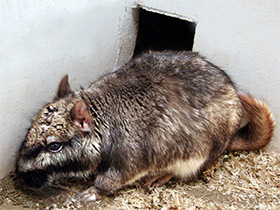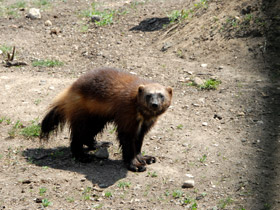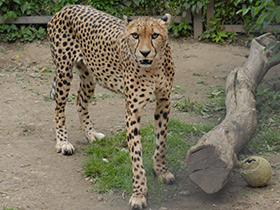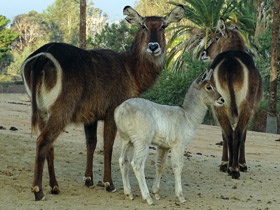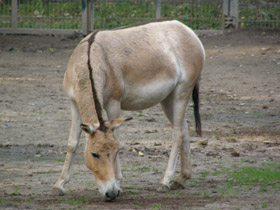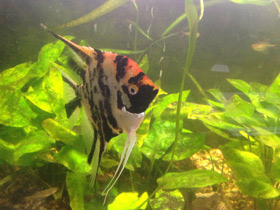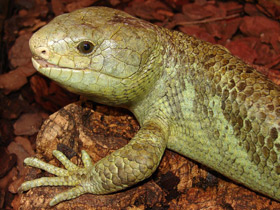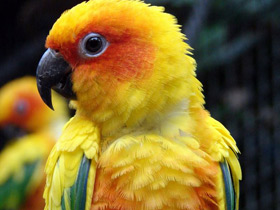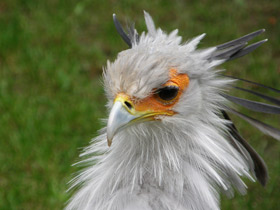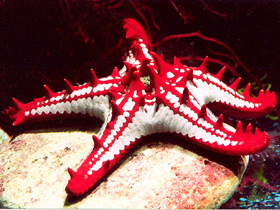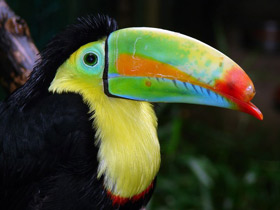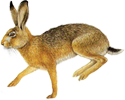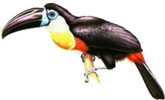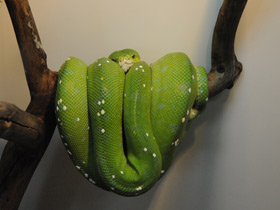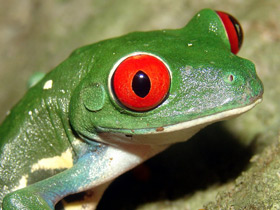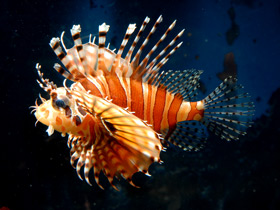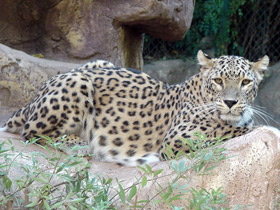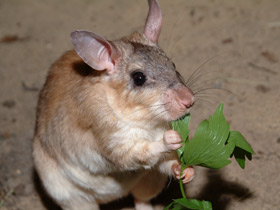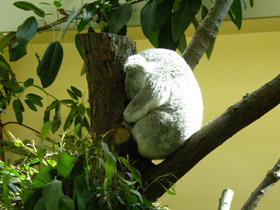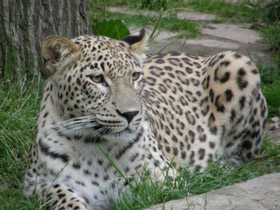The plains viscacha or plains vizcacha (Lagostomus maximus)
The plains viscacha or plains vizcacha (Lagostomus maximus) is a species of viscacha, a rodent in the family Chinchillidae.
Description
Lagostomus maximus has short soft fur that is grey-brown on the back, paler on the sides and white on the belly. Both sexes have white markings on the cheeks and above the eyes. No seasonal changes in fur colour have been noted. The head is massive and the eyes and ears are large. The front paws are short and the hind paws are long and muscular. The front foot has four long, flexible toes. The hind foot is elongated and three toes are armed with strong claws. The animals have a pronounced sexual dimorphism. Males have a massive head and a distinct facial mask, and are much larger than females. The weight of males is from 5 to 8.8 kg, body length is 68-82 cm, tail length is 15-20 cm, and ears are 5-6.5 cm long. The mass of females is 3.5-5 kg, body length - 53-73 cm, tail length - 13-17 cm, ears length - 5-6 cm. Life expectancy in captivity is 9 years.
Distribution
The species inhabits northern, central and eastern Argentina, southern and western Paraguay and southeastern Bolivia.
Lagostomus maximus lives on plains, including subtropical, moist lowlands in northeastern Argentina, dry shrublands of Paraguay, Bolivia, northern and central Argentina, drought-tolerant steppes of central Argentina, and desert shrublands. Lagostomus maximus are colonial animals. One to three males and two to four times as many females live in a communal system of burrows, spaced from a few centimetres to several metres apart. The size of burrow exits depends on the type of ground and number of inhabitants (from 12 cm to 1 m, burrow slope 10-30 degrees, depth more than 2 m). Sticks, bones, cow dung and other objects are collected and placed around burrow entrances by plains vizcachas to interrupt their odour and protect burrows from flooding.
Nutrition
Lagostomus maximus are herbivorous animals, coprophagous. They feed on grass, leaves, twigs, sometimes seeds, pods, fruits, depending on where they live, consuming large amounts of green biomass.
Reproduction
The mating period of Lagostomus maximus is seasonal in nature. The gestation period lasts 154 days, heat lasts 40 days and occurs in autumn, in spring one to four cubs are born. Females reach sexual maturity at the age of 215 days (7-8 months). Sexual maturation of males occurs at the age of 12-16 months.









